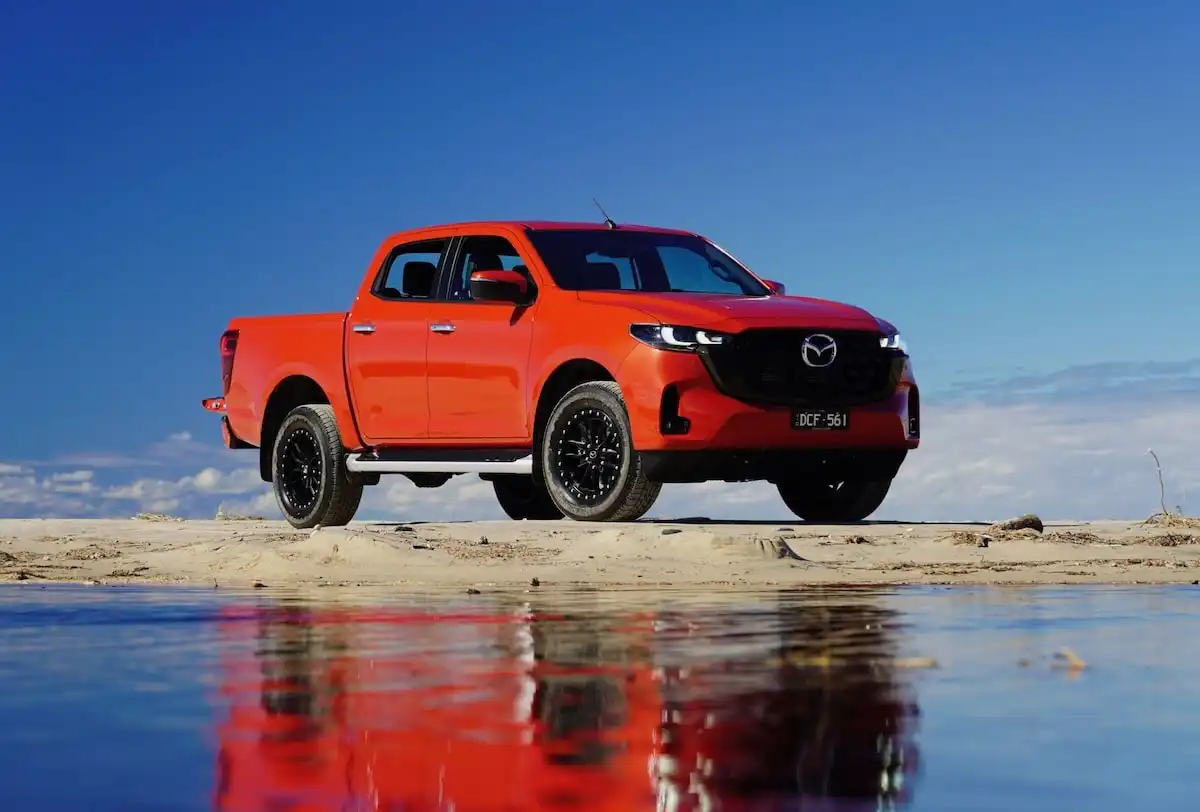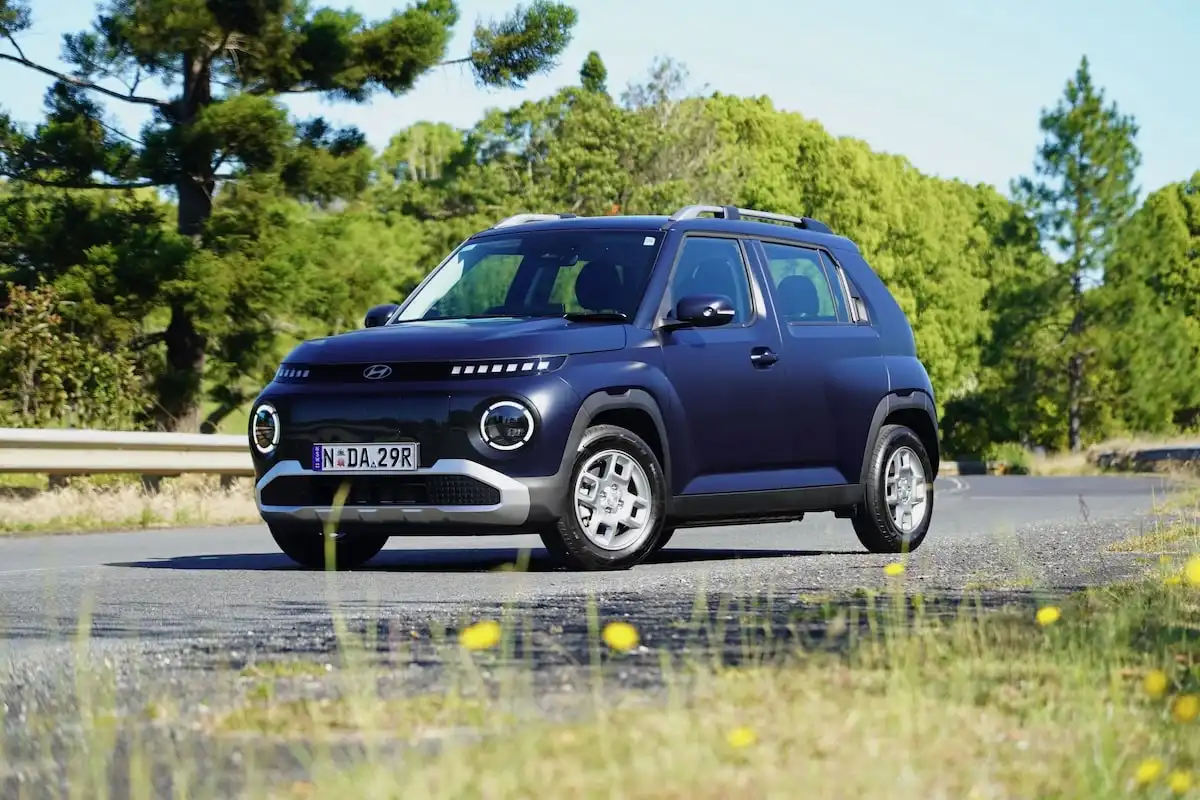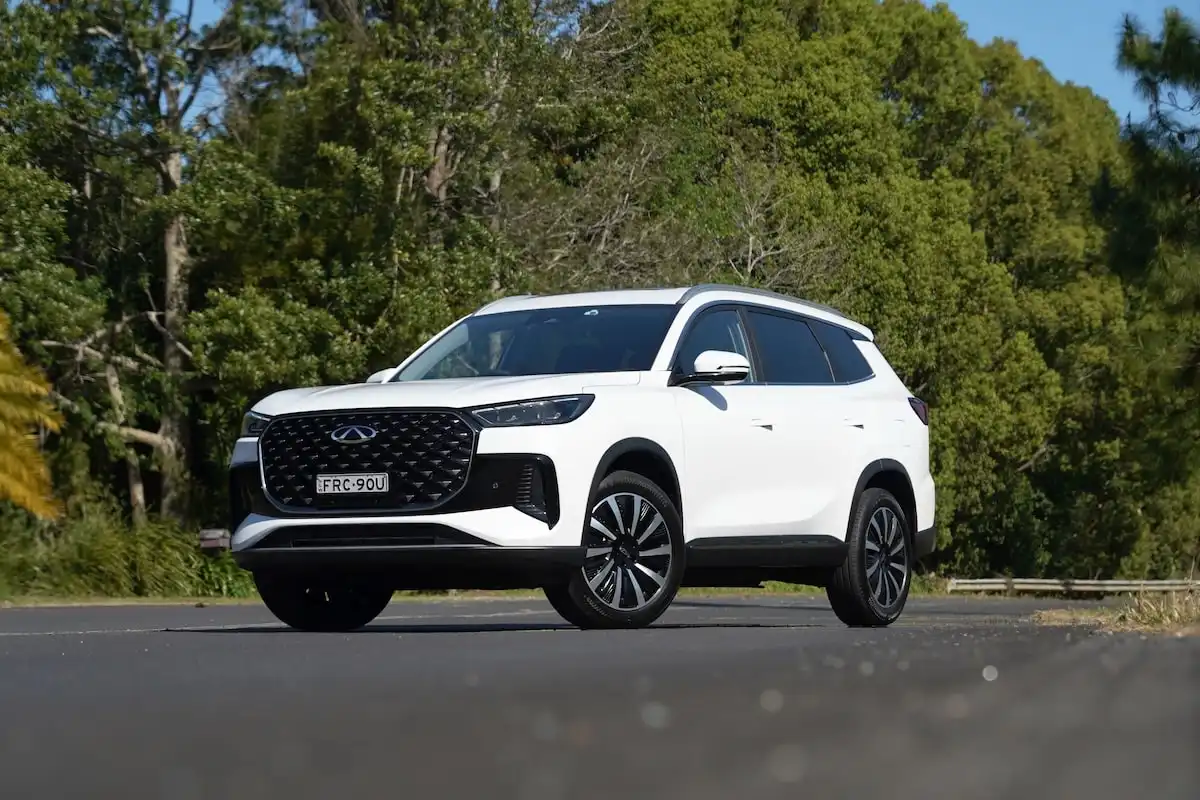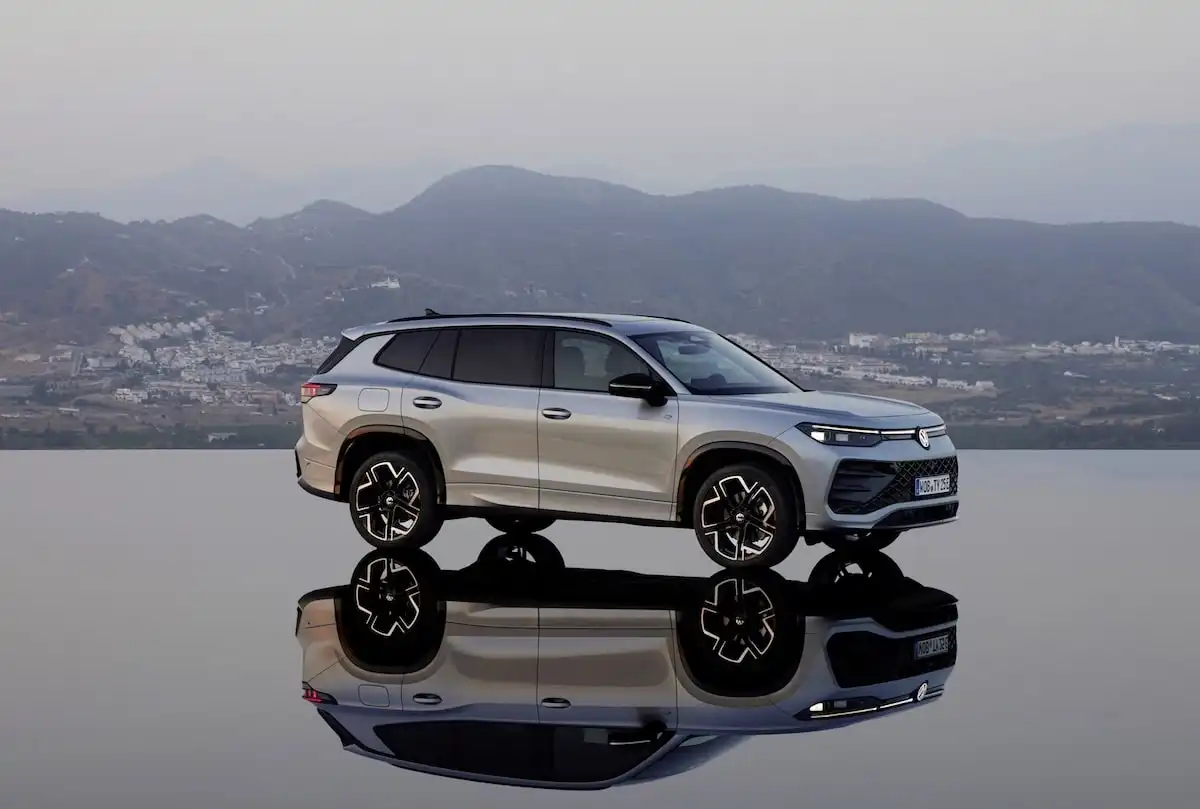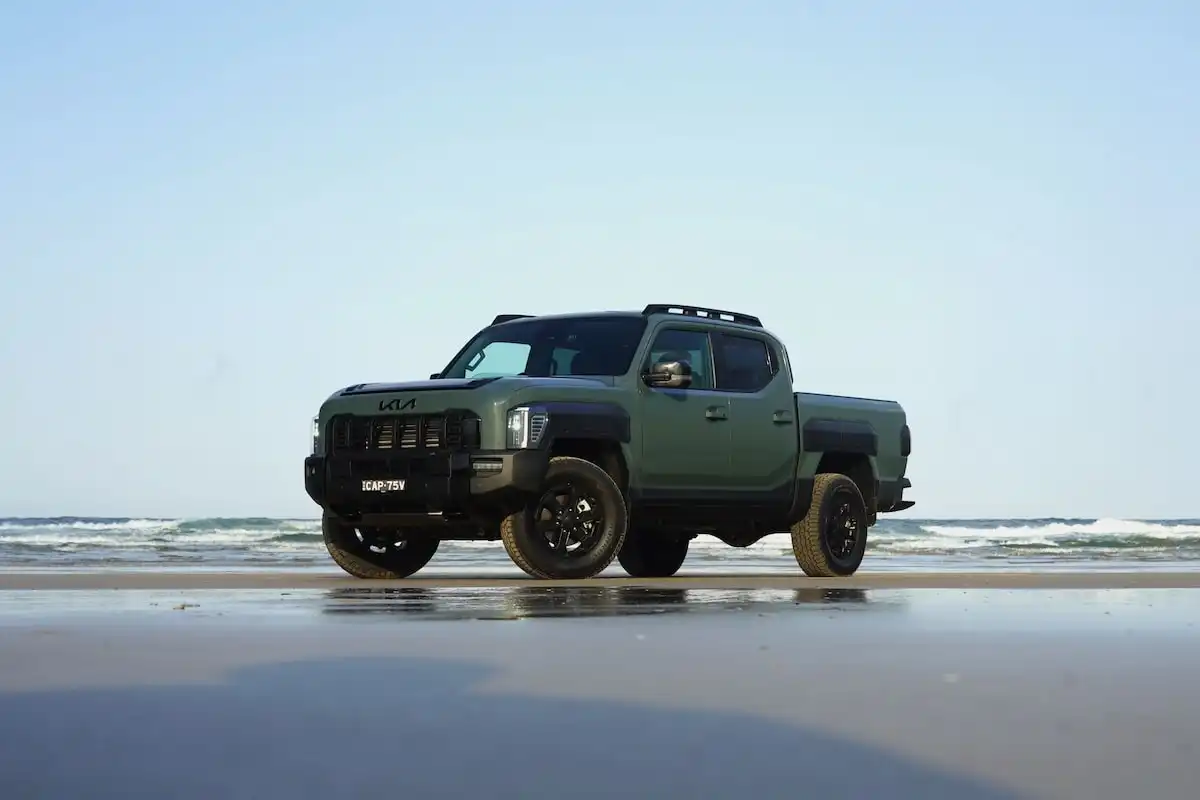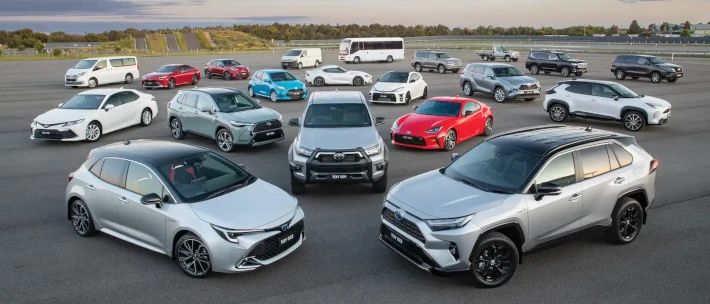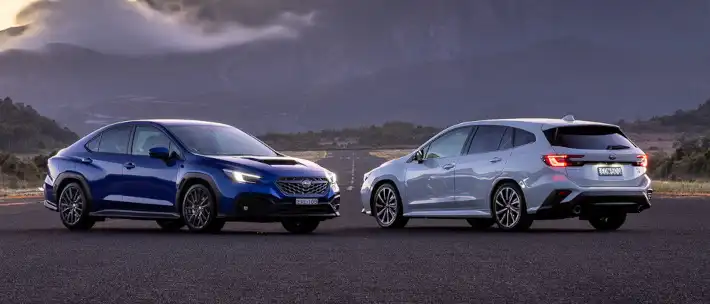With its skeleton and engine lineup borrowed from the almighty D-Max, the Mazda BT-50 has rock-solid credentials when it comes to lugging around cargo and conquering the outdoors, with the added allure of Mazda’s more premium take on exterior styling and interior design.
Over last year’s model, the MY25 BT-50 picks up some key improvements, namely to its technology suite, which was becoming a bit of a chink in its armour, algonside revised front grille design that makes a bold first impression and redesigned LED head & tail lights.
All up, they give the latest BT-50 more on-road presence and an added sense of aggressiveness, do the changes correlate with the sizable price increases over last year’s range?
To find out, we got behind the wheel of the MY25 BT-50 GT dual-cab pickup to find out how it stacks up in the range and which is our preferred variant in the latest BT-50 lineup.
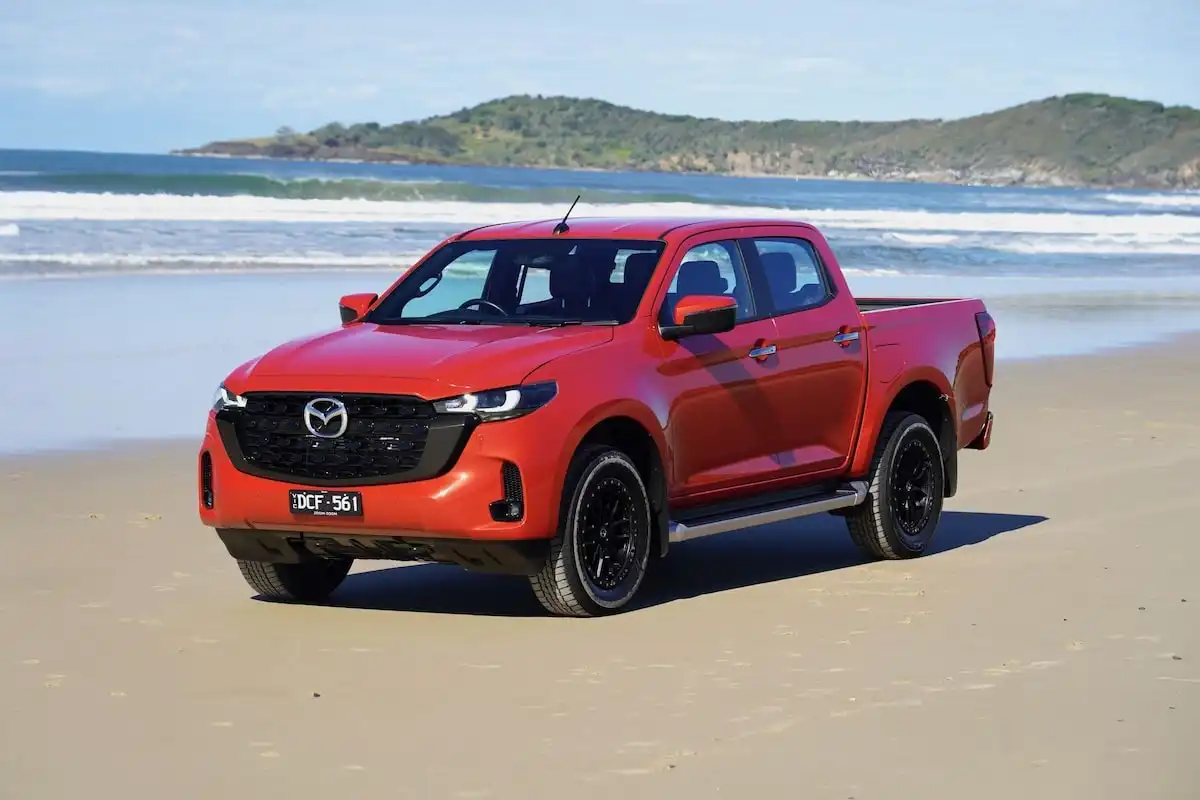
Mazda BT-50 Competition
Mazda BT-50 |
VS |
Ford Ranger |
| Toyota HiLux | ||
| Isuzu D-MAX | ||
| Mitsubishi Triton | ||
| GWM Cannon | ||
| LDV T60 | ||
| Nissan Navara |
How Much Does It Cost?
Prices for the MY25 BT-50 range kick off from $36,400 for the entry-level BT-50 XS single-cab chassis 4x2 and stretch out to $71,500 for the flagship BT-50 SP dual-cab.
-
BT-50 XS Single-Cab 4x2 - $36,400
-
BT-50 Dual-Cab 4x2 - $46,610
-
BT-50 XTR Dual-Cab 4x2 - $53,790
-
BT-50 XT Dual-Cab 4x4 - $56,220
-
BT-50 XTR Dual-Cab 4x4 - $62,750
-
BT-50 GT Dual-Cab 4x4 - $66,170 (tested)
-
BT-50 SP Dual-Cab 4x4 - $71,500
Keep in mind that these prices are subject to change and do not include on-road costs.
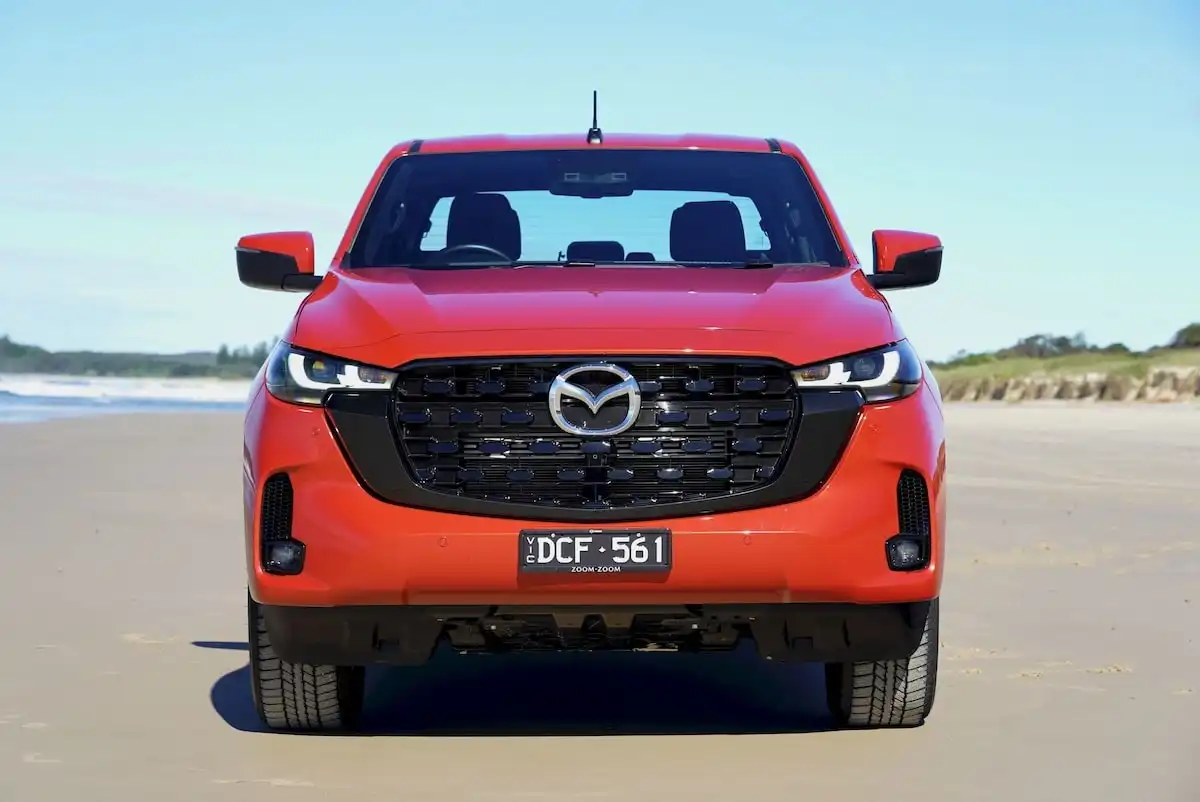
How Much Can OnlineAuto Save You?
Using OnlineAuto’s car buying service, you could save thousands on your next car with the help of our team of car-buying specialists.
Mazda BT-50 GT Dual-Cab 4x4 Specifications
| Model Date | 2025 |
| Make | MAZDA |
| Model | BT-50 |
| Series | B30F |
| Variant | GT (4x4) |
| Body | DUAL CAB P/UP |
| Fuel type | DIESEL |
| Transmission | 6 SP AUTOMATIC |
| Drive | 4x4 |
| Engine | TCDI |
| Engine capacity | 2999 |
| Engine configuration | DUAL OVERHEAD CAM / 16 valves |
| Engine RPM | 3600.0 / 1600.0 |
| Cylinders | DT4 |
| Torque | 450 |
| KW | 140 |
| Fuel tank size | 76.0 |
| Fuel usage specs | 8.0 / 0 |
| CO2 | 207 |
| ANCAP security rating | 5 |
Get in touch with one of our Car Buying Specialists today.
Request a quoteWhat Features Does the Mazda BT-50 GT Have?
The BT-50 GT grade sits just below the range-topping SP and picks up a list of premium, interior-focused upgrades.
Headlining the list of GT-specific features is full black leather upholstery with heated front seats, an eight-way power-adjustable driver’s seat, heated mirrors and a remote engine start function.
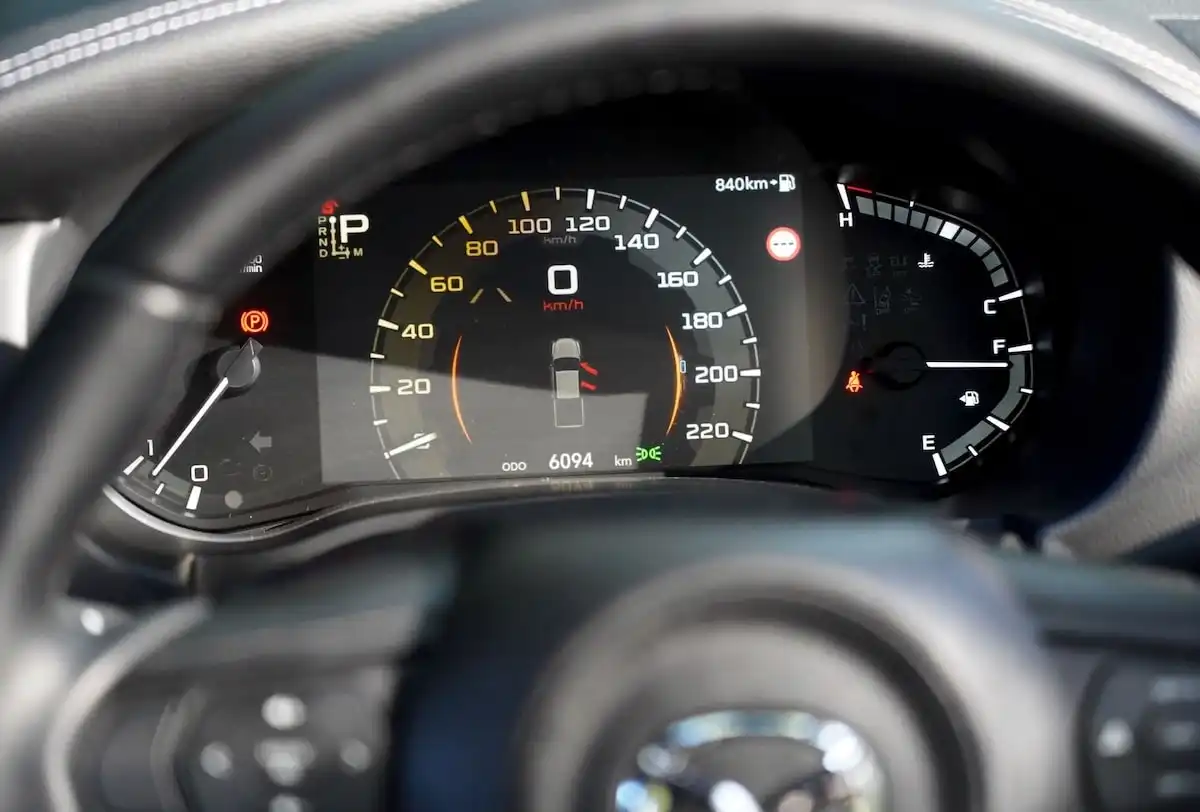
The BT-50 GT also picks up features fitted to the XTR range, which adds 18-inch alloys wrapped in highway-terrain tyres, LED head & tail lights with LED daytime running lamps, keyless entry & start, dual-zone climate control, a tub liner, side steps, power-folding mirrors and LED fog lights.
You’ll also receive a locking rear differential, tailgate assist, rough terrain mode, adaptive cruise control, a rear-view camera with front and rear parking sensors, a leather-wrapped steering wheel and an updated active safety equipment list.
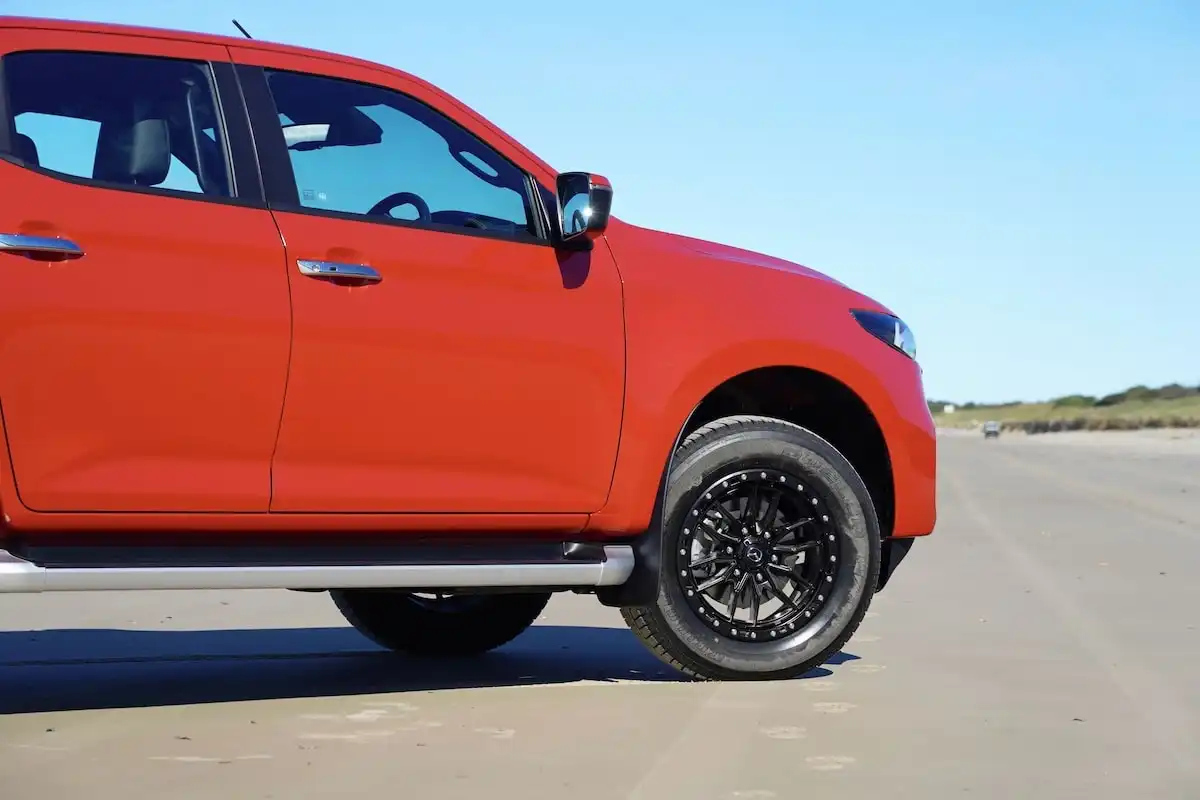
Mazda BT-50 GT Connectivity & Infotainment Features
One of the most significant upgrades to the MY25 BT-50 range is the updated infotainment suite.
While the screen real estate stays at the same 9.0 inches you’ll find in more premium versions of last year’s BT-50 range, 2025 versions pick up Isuzu’s latest infotainment display, which offers some incremental processing power upgrades and optimised software underneath.
In more affordable versions like the XS & XT, this screen drops down to an 8.0-inch unit.
If we’re honest, we’re still underwhelmed by the BT-50’s infotainment tech, which is far from a segment-leader in both this and its D-Max siblings.
The display isn’t particularly high-resolution nor bright, and turns somewhat milky as it’s drowned out by the harshest of the midday sun.
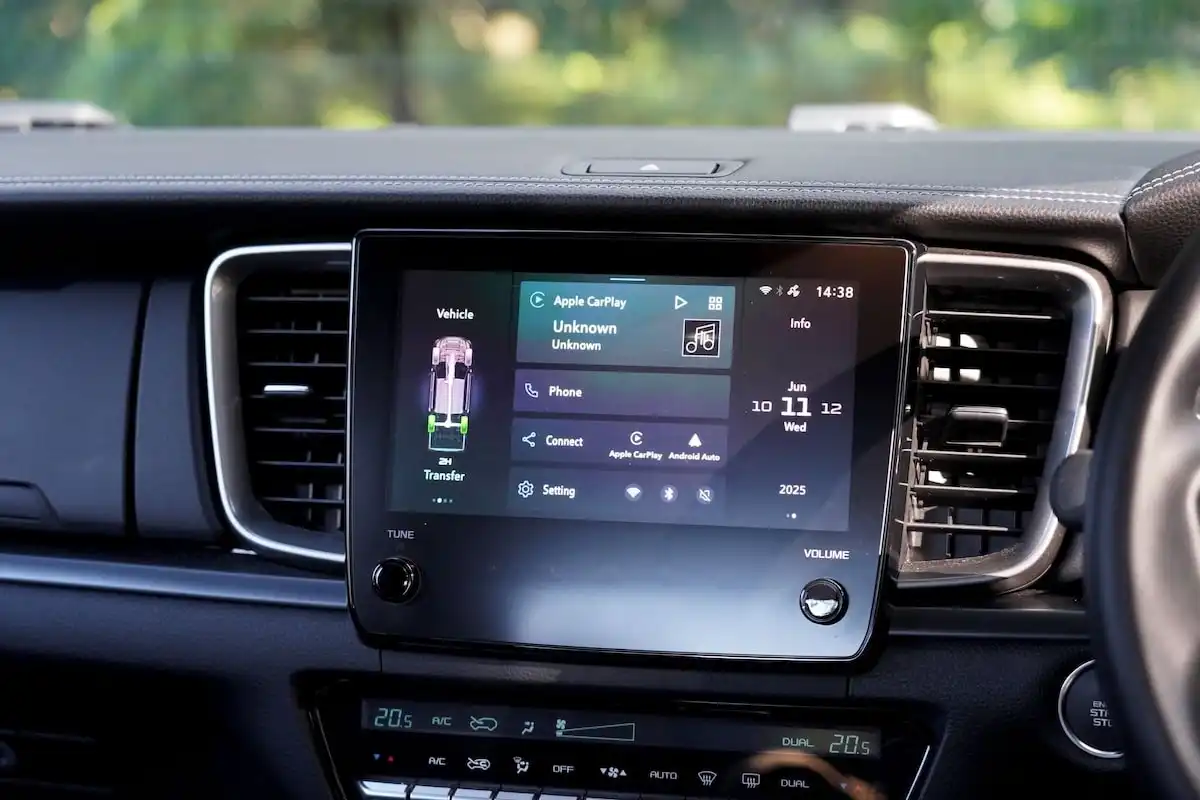
Thankfully, though, there’s a pair of rotary dials for quick volume and tuning adjustments, replacing the previous button-heavy arrangement, with a pair of USB-C ports replacing the previous USB-A offerings, which is a nice little update as smartphones migrate away from the older charging tech.
Audio comes supplied by an eight-speaker sound system that features two new roof-mounted speakers, which gets the job done, but doesn’t over-deliver at the pointy-end of the segment.
All up, the BT-50 is pretty much smack-bang in the middle of the crowd when it comes to infotainment tech, offering a more impressive package than you’ll find in the HiLux or Navara, but falling far short of the benchmark set by the Ranger.
Does the Mazda BT-50 GT Have Wireless Apple CarPlay & Android Auto?
Buyers will be pleased to know that Mazda’s updated infotainment tech now offers wireless smartphone mirroring for both major ecosystems.
While the previous range offered wireless Apple CarPlay, Android users were left out in the rain.
Now, though, the MY25 BT-50 range offers both wireless Android Auto and Apple CarPlay which worked flawlessly over my week behind the wheel.
You can also connect your smartphone via one of two USB-C ports in the front of the cabin to access Apple CarPlay and/or Android Auto.
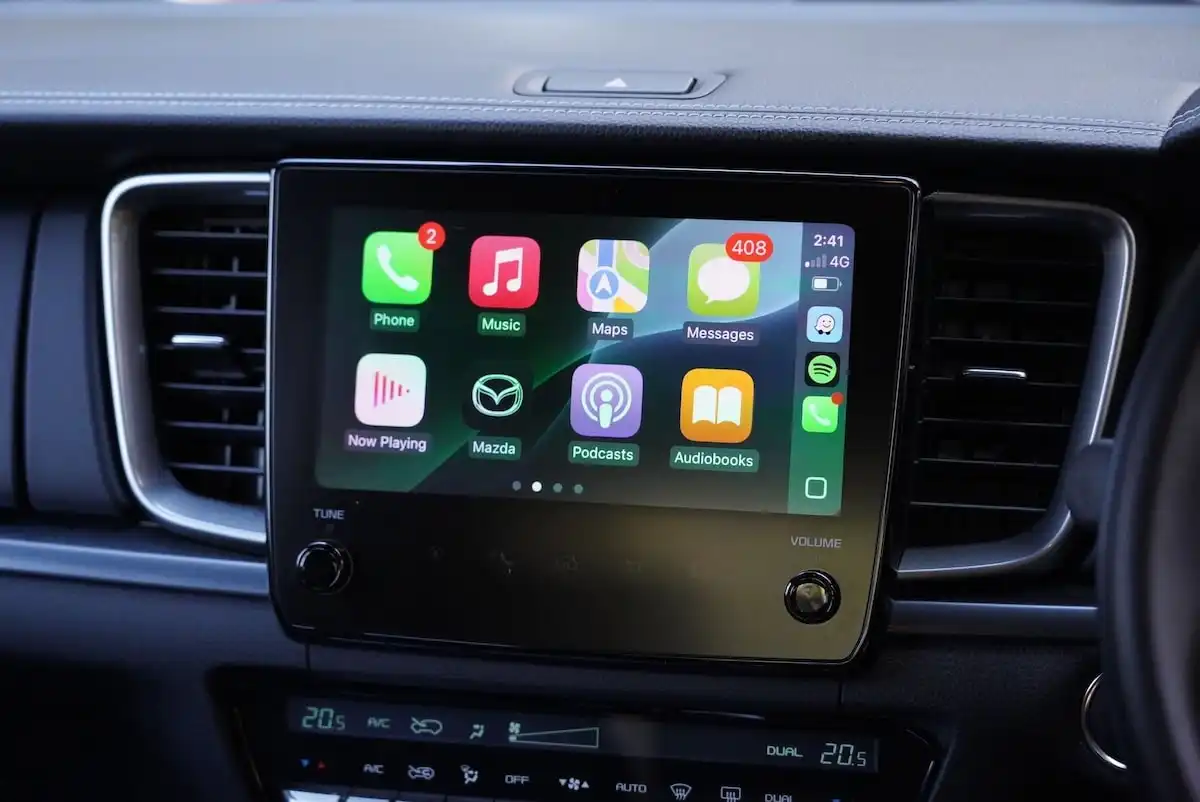
Is the Mazda BT-50 Comfortable to Drive?
While the vast majority of dual-cab utes are pretty rough around the edges, the Mazda BT-50 has a decent set of table manners.
After all, the process of creating an off-road and work-ready platform capable of carrying around nearly a metric tonne of gear in the tray comes with some sacrifices to the on-road driving experience.
While some lower-spec BT-50’s can be optioned with a 1.9-litre turbo-diesel, the GT picks up the flagship 3.0-litre four-cylinder turbo-diesel unit that pushes out 140kW of power and 450Nm of torque to the wheels via a six-speed automatic.

It sounds particularly agricultural on a cold start and thrashes away when you really get into it, though for the most part, it’s a great turbo-diesel unit that offers a healthy slice of torque low-down in the rev range for easy cruising.
Around town, we found the BT-50’s steering to be perfectly balanced for a rugged, work-ready dual-cab ute.
The ratio is well suited to low-speed turns while you’re parking, for example, remaining super lightweight when you need some maneuverability, while beefing up the amount of feedback as you pick up speed.
Of course, the ride quality around town is firm, as per usual with this segment, though it’s no worse in the BT-50 than other rivals; in fact, it’s slightly softer when hitting some moderate-sized bumps at lower speeds.
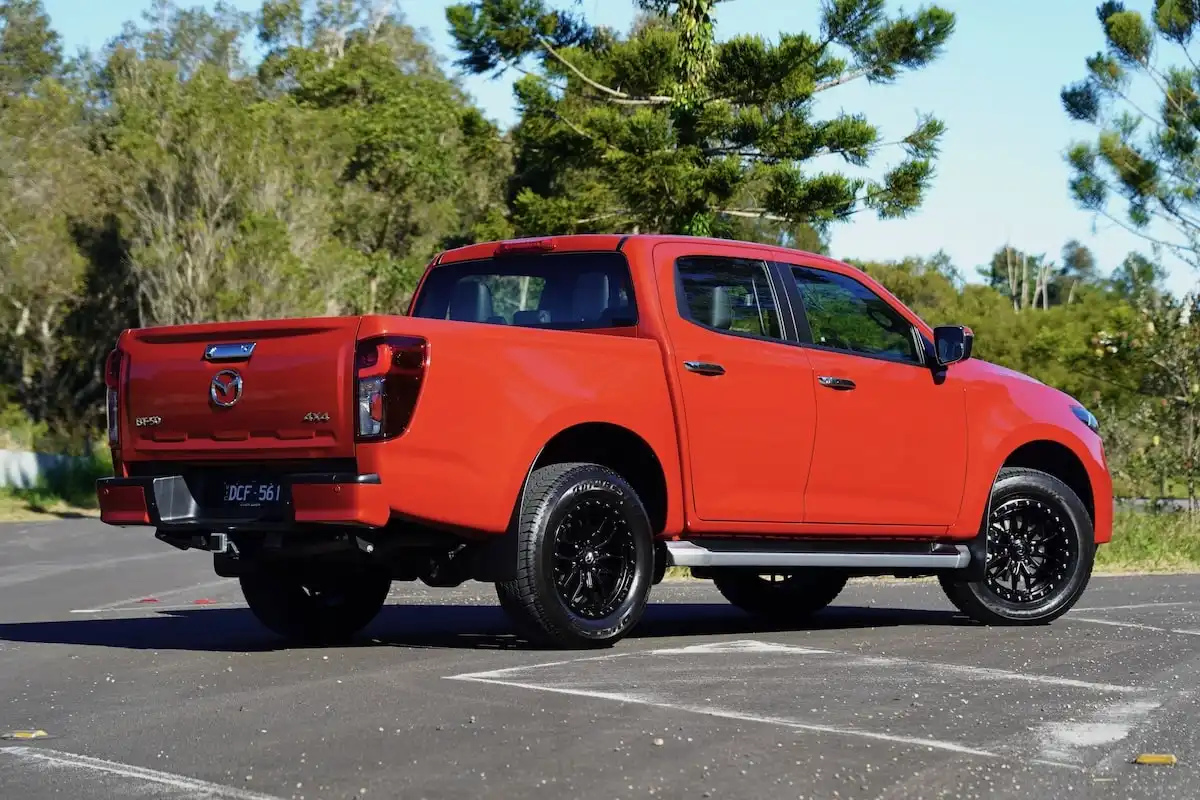
The rear end feels quite light when you’re tackling a high-paced country road without tying it down with some heavy cargo, though once again, this is par for the course in the dual-cab segment.
On the highway, the BT-50 is a reasonably strong performer, though it could use some sound insulation to eliminate road noise and the thrashiness of its turbo-diesel beating heart when you need a quick injection of pace.
Overall, though, the BT-50 covers all the fundamentals with confidence, with its tough platform paired with some versatility, bolstered by its relatively user-friendly manners around town.
Is it a Good Off-Road Performer?
It absolutely is.
With its platform and hardware borrowed from the Isuzu D-Max, the Mazda BT-50 is a strong performer when pushed off-road.
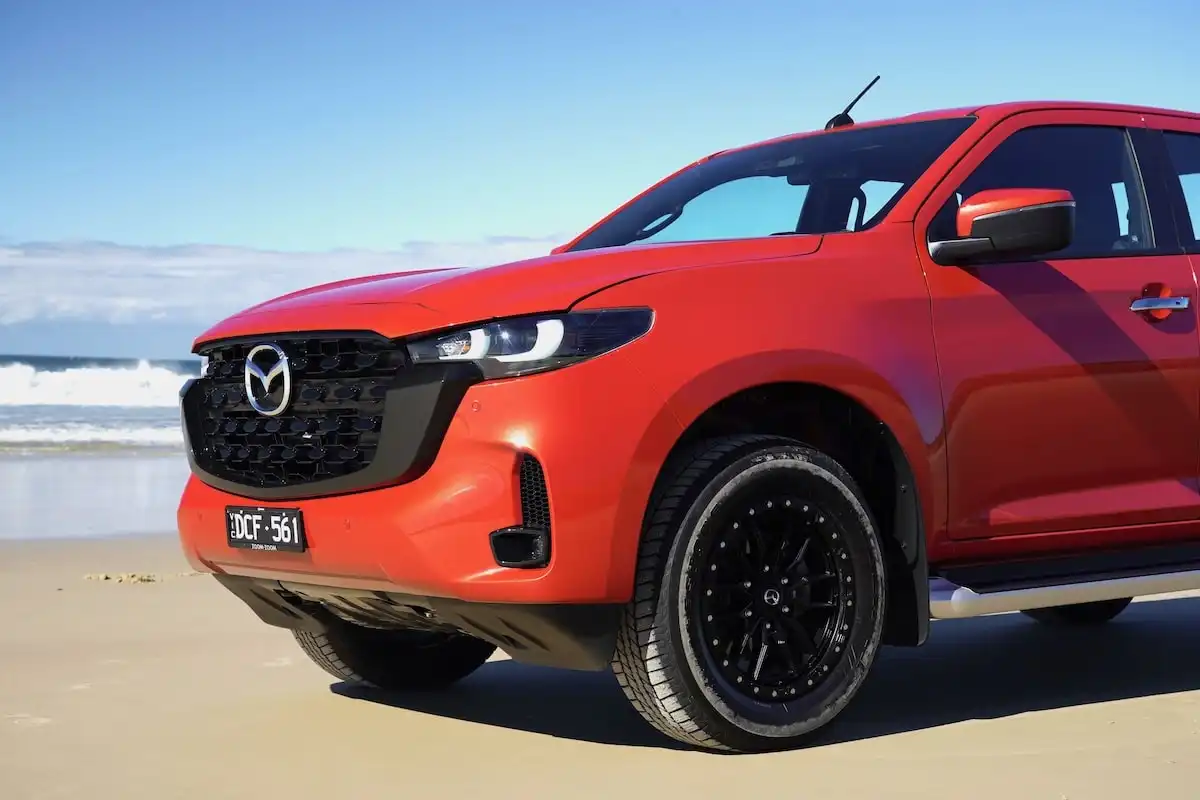
The BT-50 GT comes packing plenty of space inside the wheel arches for articulation, 450Nm of torque, a low-range transfer case, a locking rear differential and a new rough terrain mode that first debuted in the Isuzu MU-X and has now made its way to the Mazda stables.
This system optimises how torque is sent between the wheels, adding traction at lower speeds without overloading the workload of the rear differential.
-
Ground Clearance: 240mm
-
Wading Depth: 800mm
-
Approach Angle: 30.4 degrees
-
Departure Angle: 17.9 degrees
-
Breakover Angle: 23.8 degrees
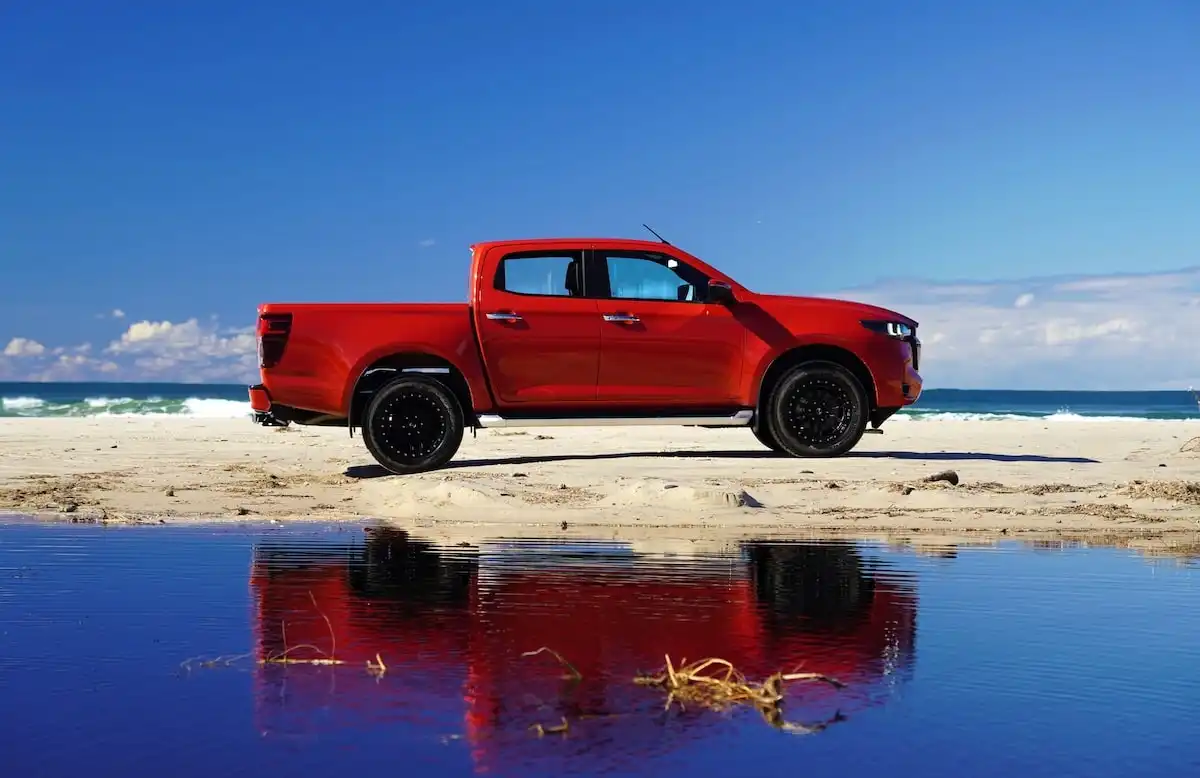
Is it Fuel Efficient?
Like the D-Max range, Mazda offers the BT-50 lineup with a pair of 1.9-litre and a 3.0-litre four-cylinder turbo-diesel engines.
The BT-50 GT lineup is offered exclusively with the more powerful engine, which means it’s thirstier than the 1.9-litre, but not prohibitively so, while adding a serious torque premium into the equation.
On paper, Mazda says the BT-50 GT consumes 8.0L per 100km on the combined cycle.
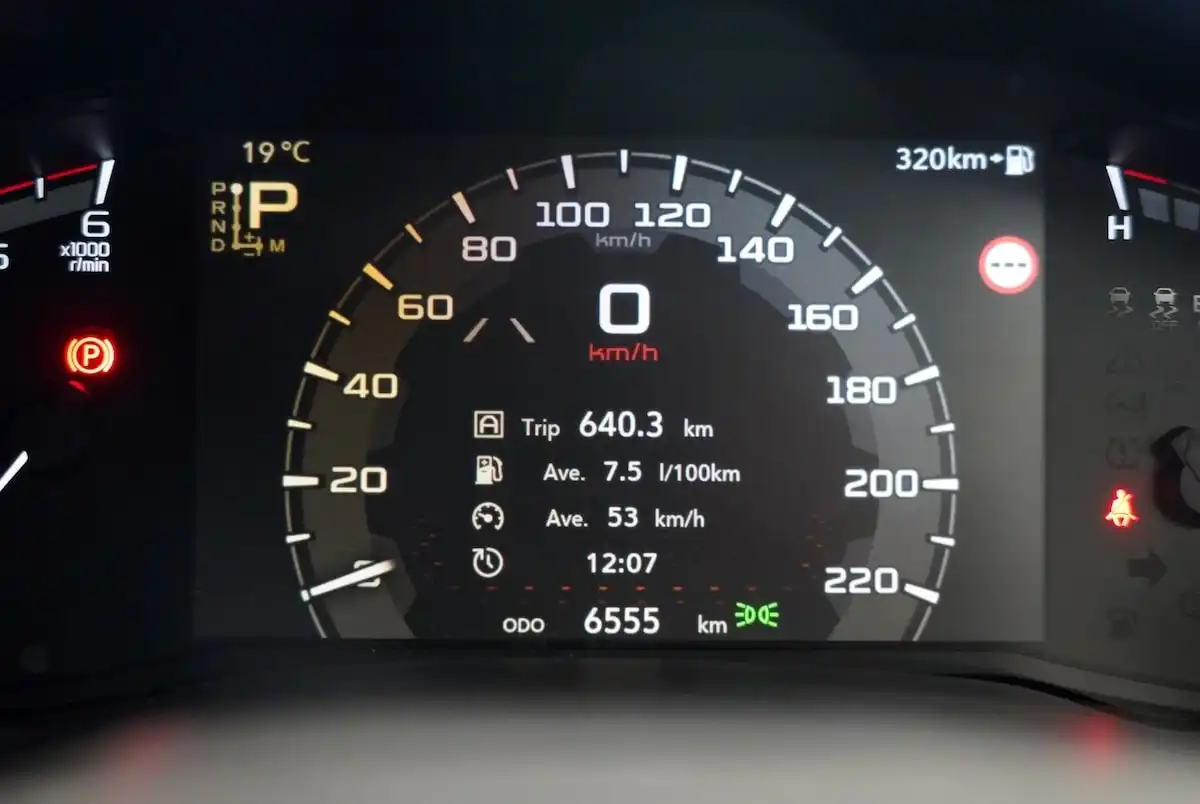
During our time behind the wheel, we were able to average 7.5L per 100km over a 604 kilometre mix of town, country and two long stints over the highway.
This shows that it’s possible to match Mazda’s official claims, with the BT-50 range offering a healthy blend of turbo-diesel power without an excessive thirst attached.
How Much Can the Mazda BT-50 GT Carry & Tow?
The Mazda BT-50 offers some serious payload figures, though you’ll want to look elsewhere if you’re looking to tap into every kilogram of its maximum braked towing figures.
Payload figures stand at a very healthy 998kg, which is 74kg more than you’ll get in the range-topping SP grade.
It also boasts braked towing capacities of 3,500kg, though the BT-50 is ultimately limited by its gross combination mass of 6,000kg, leaving you with very little in the way of payload when you factor in the weight of the tow ball.
-
Kerb Weight: 2,102kg
-
Payload: 998kg
-
Gross Vehicle mass: 3,100kg
-
Gross Combination Mass: 6,000kg
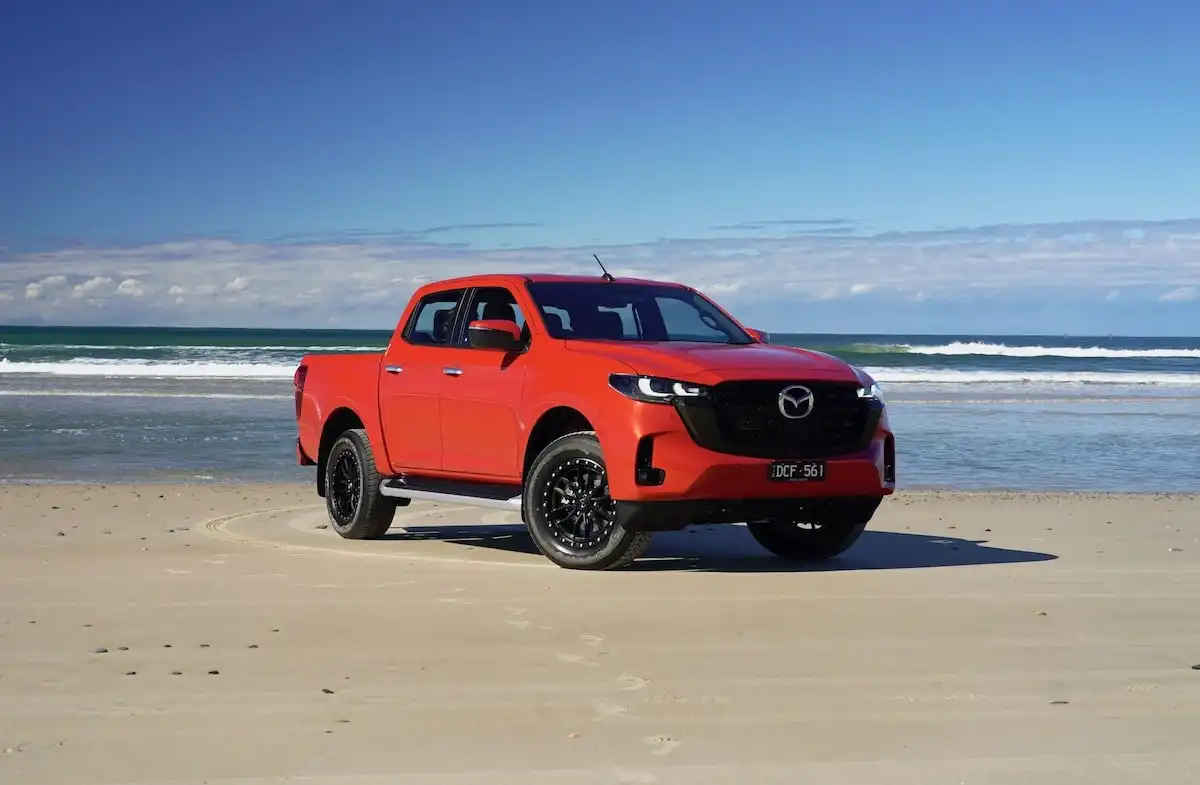
Is it Practical and Spacious?
Buyers upgrading to the BT-50 GT pick up a list of entirely interior-focused upgrades.
These culminate in a more mature and premium package, overall, though the BT-50 doesn’t try to hide its D-Max underpinnings which means that it’s ultimately a more premium version of a pretty utilitarian cabin.
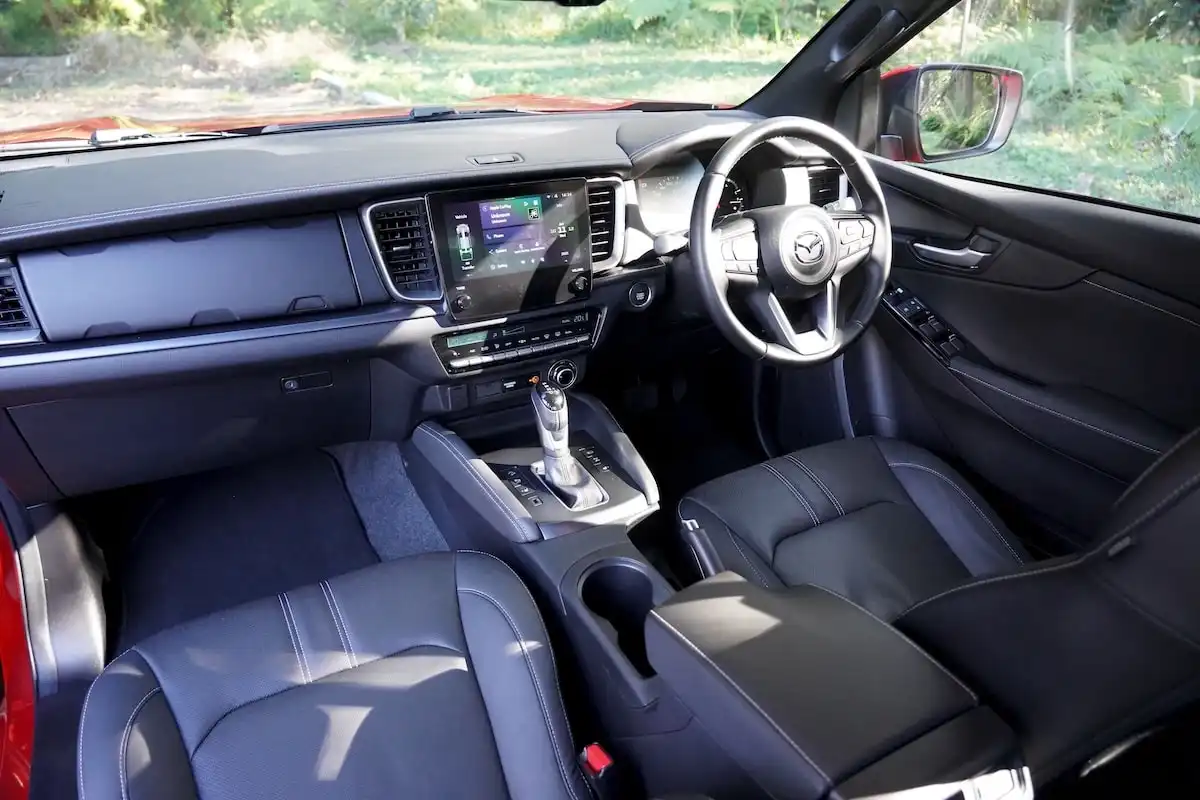
That said, the leather-upholstered seats look great, offering a nice slice of side bolstering to hold you in place through the corners.
The front passenger doesn’t get anything in the way of adjustment other than recline, though the GT grade adds eight-way power adjustment for the captain’s seat - a must-have at this end of the segment.
Headroom is excellent, even for the tallest of drivers, though forward visibility isn’t segment-leading.
The chunky, leather-upholstered steering wheel feels great, as do the door sills with their leather finishes, but there’s nothing that screams ultra-high-quality.
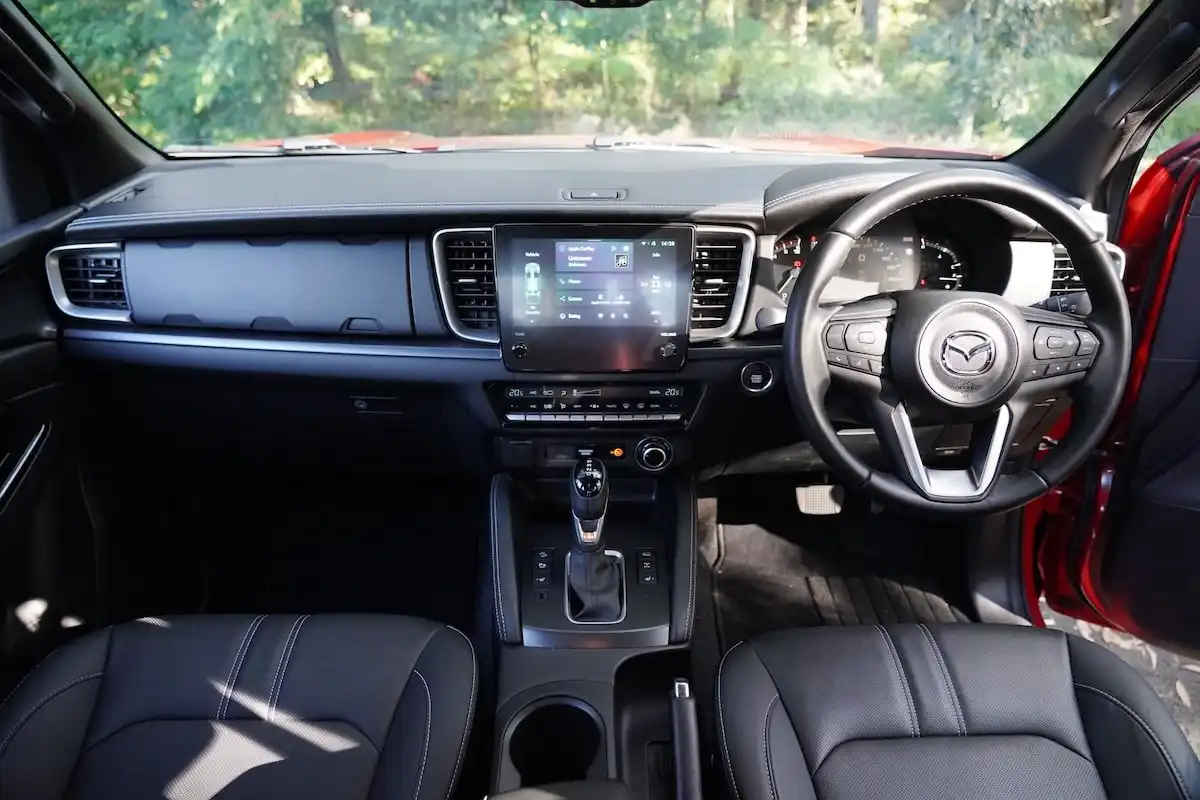
For example, there’s a bit of a wiggle in the centre console and some cheap plastic surrounds, though the addition of leather upholstery to its side walls gives your knee a soft place to sit on a long journey.
Storage options are solid, though, with a pair of large cup holders and a cubby inside the folding armrest joined by a large tray at the base of the dash.
There’s also two gloveboxes positioned in front of the passenger’s seat and a large bottle holder inside each door sill, though you miss out on the tradie-spec cupholders on the dashboard, unfortunately.
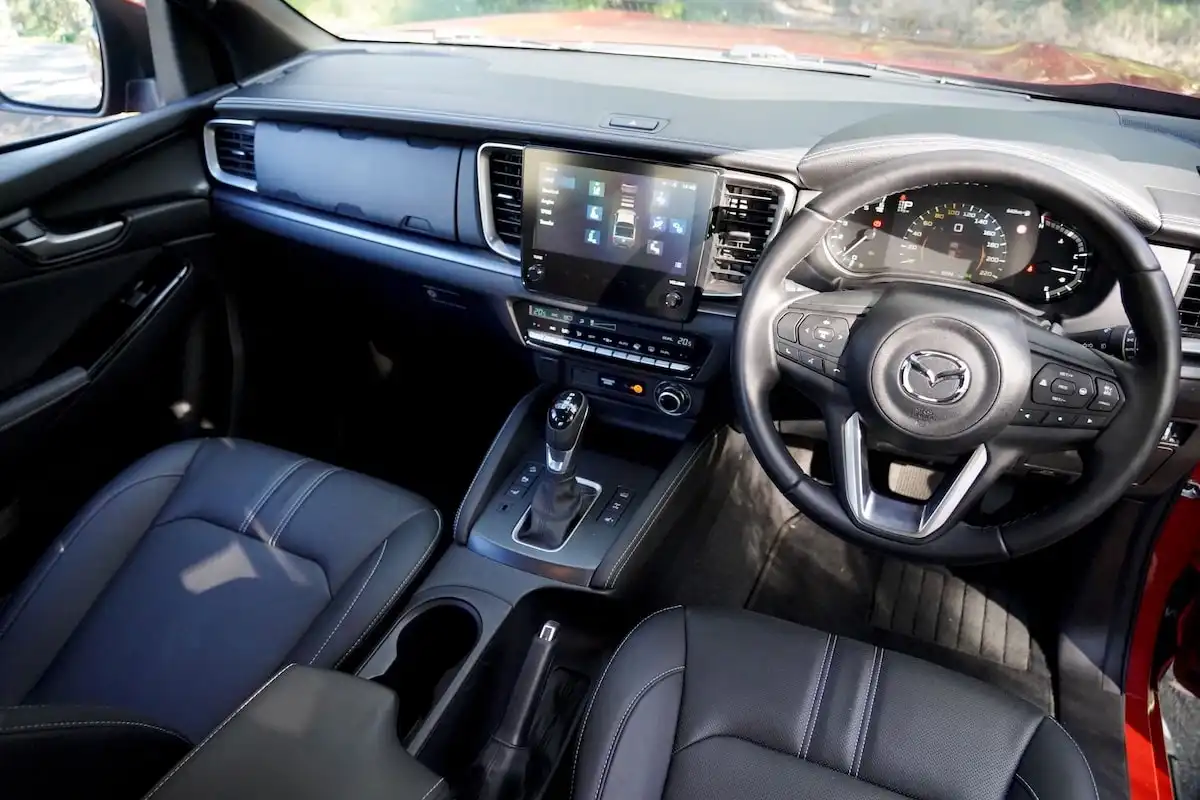
Move to the second row of the cabin and legroom is tight for tall adults behind our 185cm driving position, though this is commonplace for the dual-cab ute segment.
Sacrifice a little space up front and you can get an adult in the rear without much of a problem, with about two finger’s worth of space between the headliner and our tallest hair follicles, due to the elevated seating position in the rear.
Climbing aboard is simple with the help of the large grab handles, with rear occupants picking up a pair of air vents, a single USB-C charging port, a folding armrest with two cupholders, map pockets and bottle holders inside the doors.
For the parents, the BT-50 comes fitted with two pairs of ISOFIX anchors on the outboard seats, with fabric top tether mounts located behind the headrests.
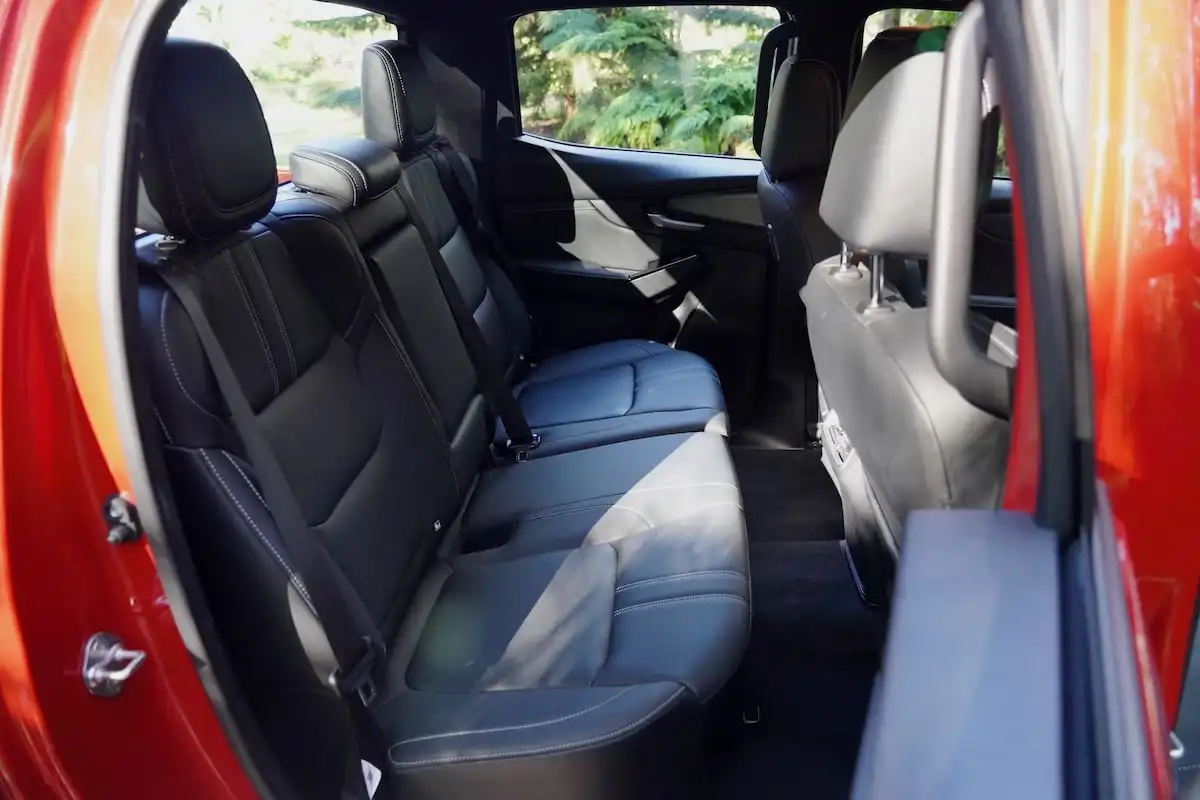
How Big is the Mazda BT-50’s Tray?
The BT-50 XTR and above all pick up a factory tub liner inside the tray, though you won’t find a tonneau cover included.
The BT-50’s tray measures 1,571mm long by 1,530mm wide and stands 490mm tall, with four tie-down points sitting inside to help secure loose cargo.
The BT-50 XT and above all pickup a dampened tailgate hinge, which means things are nice and silent when you drop it down to access the tray.
-
BT-50 Tray Length: 1,570mm
-
BT-50 Tray Width: 1,530mm
-
BT-50 Tray Depth: 490mm
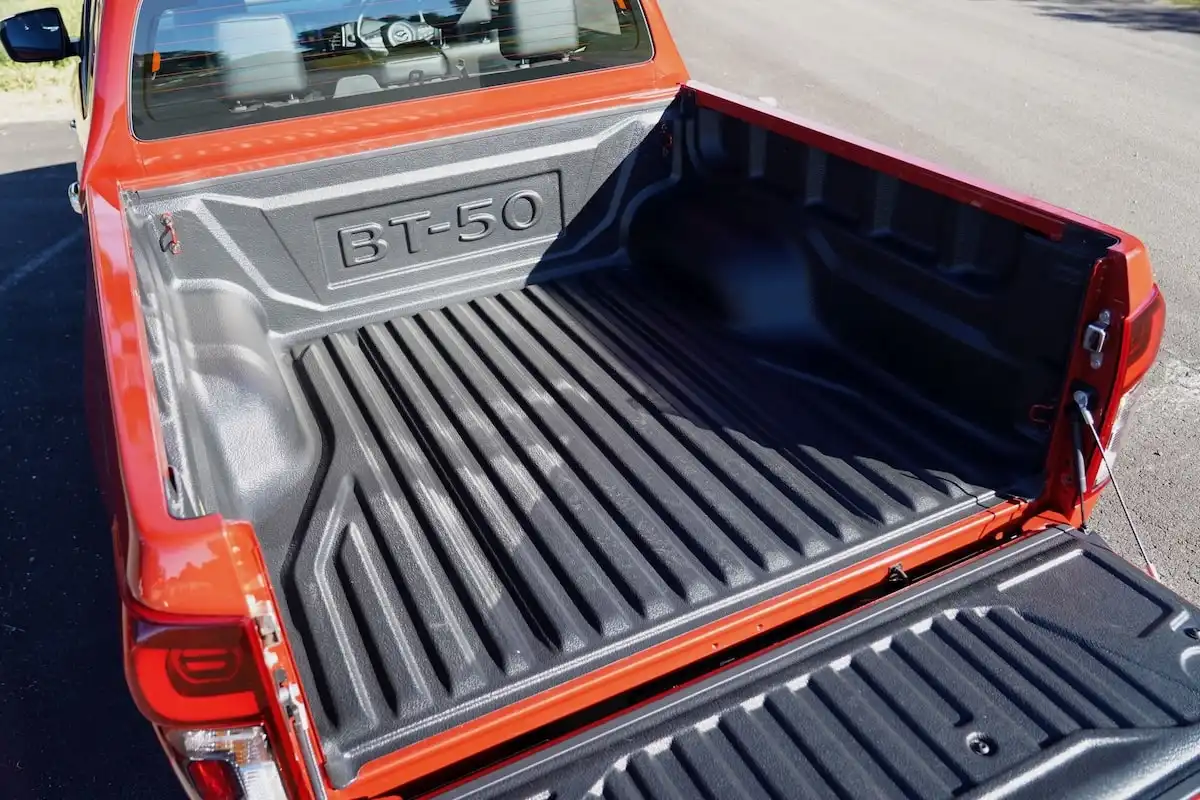
Is it Safe?
The Mazda BT-50 offers a very solid safety package for buyers thanks to a lengthy equipment lsit and some upgraded hardware.
There’s a pair of new stereo cameras utilised by the AEB system, for example, which offers a wide range of coverage for the system and an upgraded, water-repellent cover for the rear-view camera.
The rear-cross traffic alert system has also been optimised and can now hit the anchors when it detects a hazard, alongside the inclusion of motorcyclist detection for the AEB system.
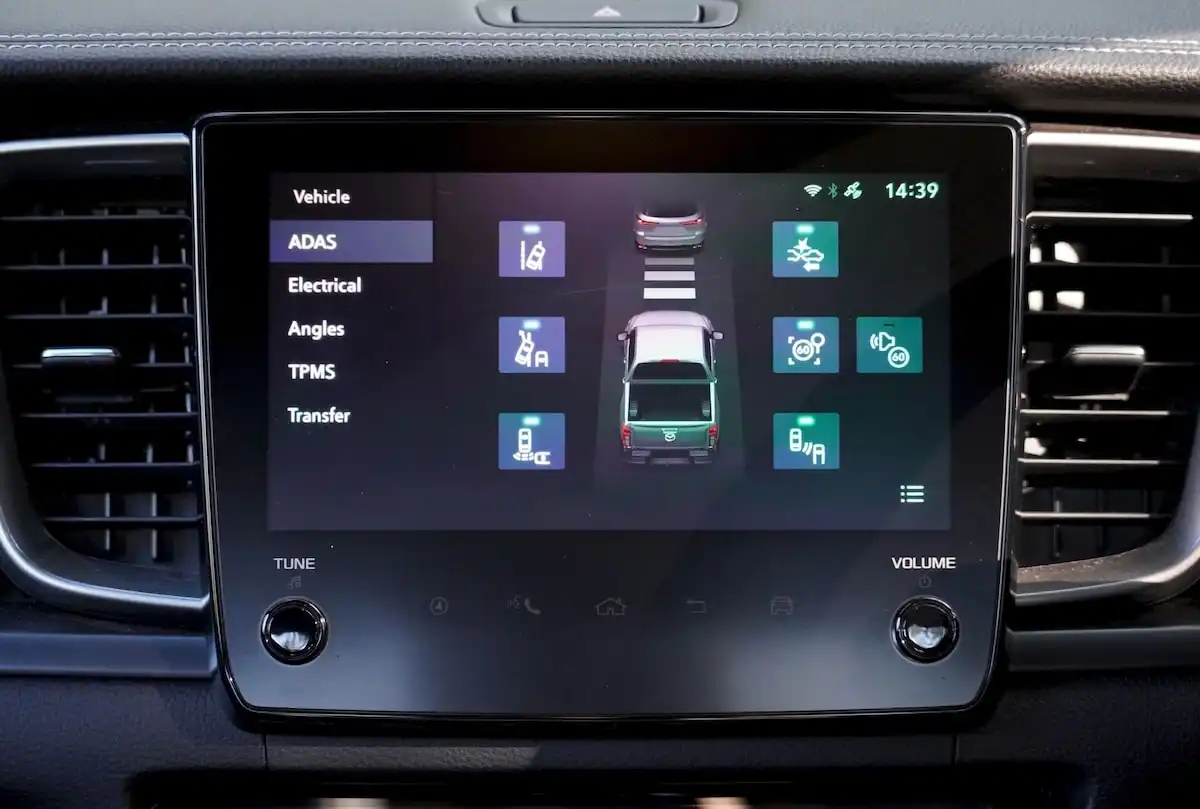
All BT-50 variants in 2025 come packaged with AEB, adaptive cruise control, rear cross-traffic alerts, blind-spot monitoring, lane-departure alerts with lane-centring, trailer sway control, traffic sign detection, driver attention monitoring and a rear-view camera with rear parking sensors.
Upgrading to the GT or above adds a set of front-mounted parking sensors.
All up, the BT-50 ticks the most important boxes when it comes to safety gear, though we found the calibration of the lane-centring system to be a little off-centre, at times bouncing us between the lane markings.

Does the Mazda BT-50 Have an ANCAP Safety Rating?
The Mazda BT-50 range wears a five-star ANCAP safety rating after it scored the following marks in 2022 testing.
-
Adult Occupant Protection: 86%
-
Child Occupant Protection: 89%
-
Vulnerable Road User Protection: 67%
-
Safety Assist: 84%

What Warranty does the Mazda BT-50 Come With?
Mazda offers the BT-50 range with a five-year/unlimited-kilometre warranty, which also includes five years’ worth of roadside assistance.
Mazda offers capped-price servicing for five years, the prices for which we’ll map out across both the 1.9-litre - 3.0-litre engine options and both 4x2 - 4x4 drivetrains.
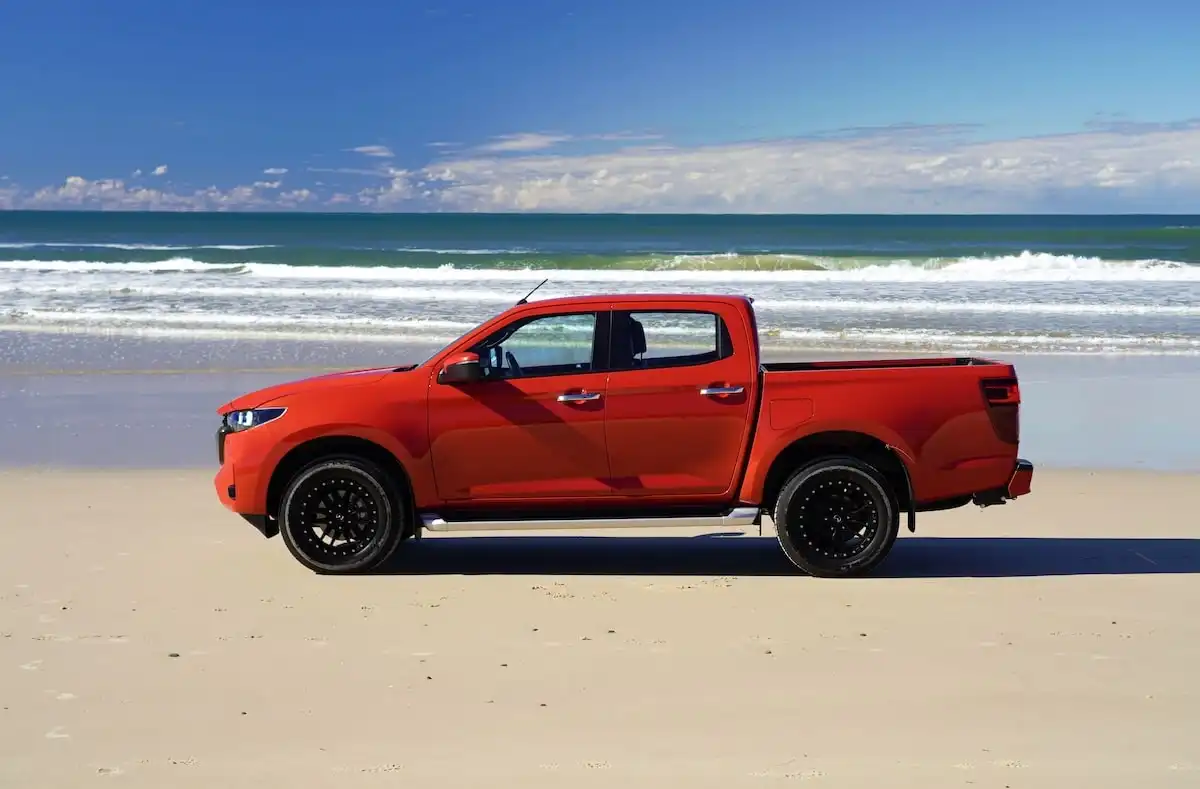
-
BT-50 1.9-litre 4x2 Capped Price Servicing: $2,166
-
BT-50 3.0-litre 4x2 Capped Price Servicing: $2,406
-
BT-50 3.0-litre 4x4 Capped Price Servicing: $2,496 (tested)
Service intervals for the BT-50 range stand at 12 months or 15,000 kilometres.
Our Verdict: Is the Mazda BT-50 Worth it?
Mazda’s improvements for the 2025 BT-50 range target one of its predecessor’s most notable weaknesses: the in-car technology suite, which was completely outpaced by the best in the segment.
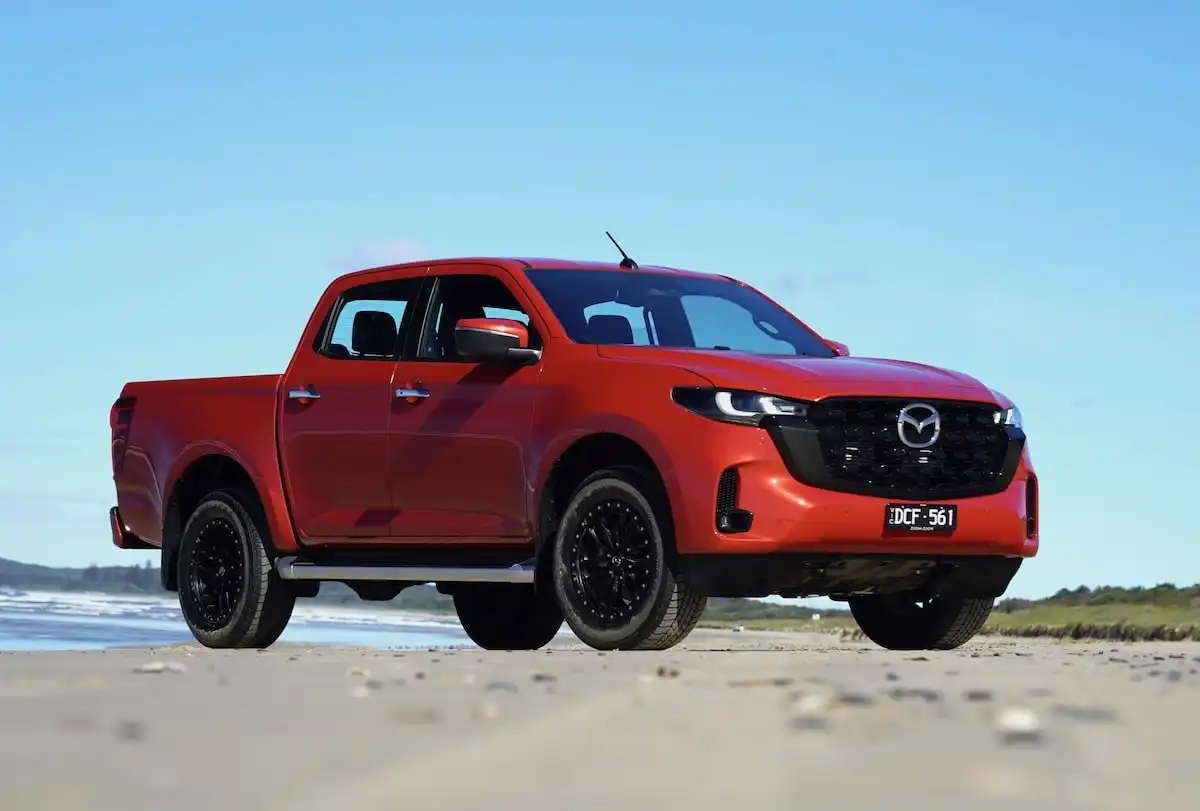
The company tackled the issue head-on, though we’re still not totally convinced, considering the price premium you’re paying for the new, improved yet still relatively underwhelming infotainment tech.
The BT-50 is a rock-solid platform that feels tough and offers some great payload figures for the near-flagship dual-cab ute segment, but the GT version’s interior-focused upgrades aren’t quite as compelling when you consider both the savings of the XTR variant, or the added hardware equipped to the flagship SP.
As a result, it sits as a bit of an awkward middle child in the BT-50 range, though if you’re purely after some interior upgrades for your BT-50, it’s hard to ignore.
The XTR dual-cab with the flagship 3.0-litre engine remains the pick of the bunch, in our opinion, which receives the same styling, safety and tech upgrades while retaining all the go-anywhere versatility that has made the BT-50 a seriously attractive option in the dual-cab ute segment.
Don’t forget that our team of car-buying experts is waiting on hand to help find you the best possible price on your next car.
PICTURE
Five Mazda BT-50 GT Specs You Need to Know
-
Five-year/unlimited kilometre warranty
-
3.0-litre turbo-diesel (140kW / 450Nm)
-
998kg payload figures
-
8.0L per 100km fuel economy
-
Five-star ANCAP safety rating (tested 2022)
Get in touch with one of our Car Buying Specialists today.
Request a quote